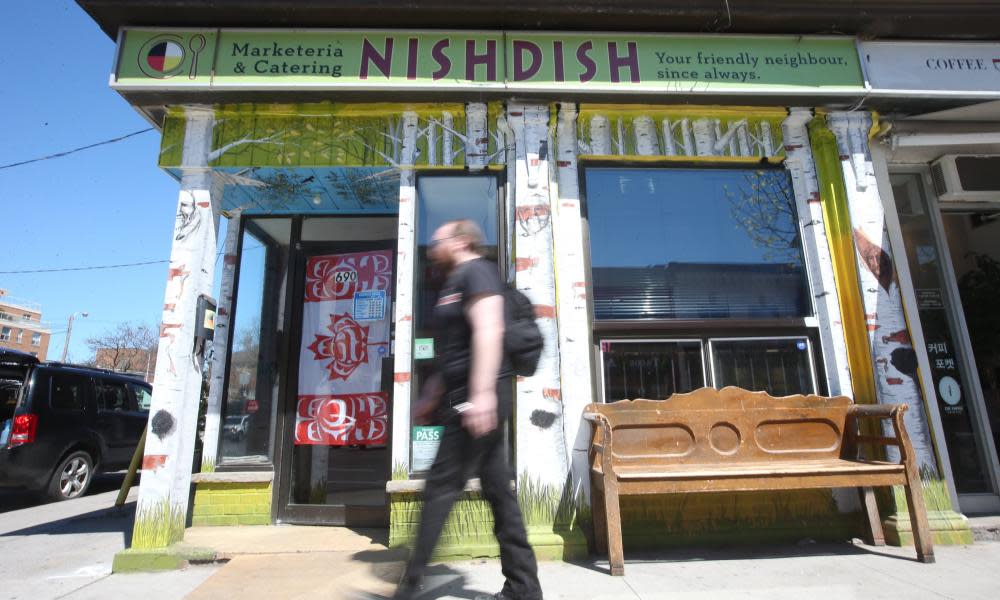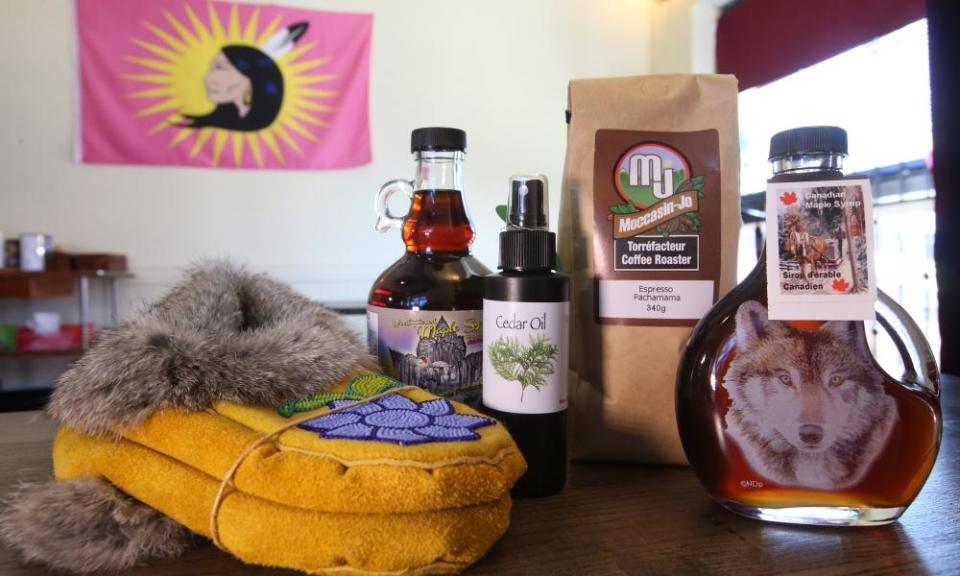Canada embraces indigenous cuisine, a long-silenced culinary tradition

The line at the door snaked down the street, eventually spilling out into a residential area. In a city offering menus from around the globe, more than 800 people had turned up for the opening of a relative rarity: a restaurant devoted to First Nations cuisine.
“It was like a dream, just standing there and seeing everyone,” said Johl Whiteduck Ringuette, the Anishinaabe chef behind the Toronto restaurant NishDish. “And knowing that we now had this opportunity to bring this food to everybody.”
Since that opening in April, thousands have passed through the door of this small restaurant, indulging in dishes that range from wild rice casserole to elk with cranberries, and embracing Whiteduck Ringuette’s efforts to revive long-silenced culinary traditions.
His menu swaps ingredients such as cheese and wheat flour for indigenous ingredients such as beans, corn and squash. “There were no cows here,” he said. “And flour was brought here by the settlers.”
His restaurant NishDish is one of a handful of indigenous-owned restaurants that have sprung up in Toronto in recent years. Their arrival has prompted questions about why Canada – home to some 1.8 million people who identify as indigenous – counts only about a dozen indigenous restaurants.
“That’s the big question,” said Whiteduck Ringuette. “To talk about that we have to talk about the treatment of indigenous people.”
Some of the reasons are obvious. “My parents didn’t have the right to vote here until 1960,” said Whiteduck Ringuette. “If we didn’t even have the right to vote, how are we going to have restaurants?”

Canada’s colonial past is marked by a steady erosion of indigenous food traditions, a process aided by the use of food and food sovereignty as a weapon against indigenous peoples, he said.
Starvation was used to force First Nations peoples on to reserves while settlers sought to curtail aboriginal hunting and fishing rights.
At church-run residential schools, where 150,000 aboriginal children were forcibly sent, indigenous food traditions were replaced with persistent hunger and malnutrition.
The recent growth in indigenous-owned restaurants hints at changing circumstances, said Shawn Adler, the chef behind Toronto’s Pow Wow Cafe.
“My mother was in residential school, her mother was in residential school,” he said. “So my generation is the first generation of kids growing up not to have our culture stripped from us.”
Since 2016, Adler has been serving a changing menu featuring his take on Indian tacos, an open-face sandwich commonly served at the First Nations dance competitions and social gatherings known as powwows.
Once the initial media hype died down, he realised it would be a challenge to attract new customers. “People understand what Thai food is, what Italian food is, what Chinese food is, what Ethiopian food is,” said Adler. “But people don’t really understand what indigenous cuisine is.”
Part of the problem lies in the broad range of foods encompassed by the term indigenous food, reflecting ingredients found across Canada’s wide expanse – from salmon on the coast to buffalo on the plains.
And Canada’s handful of indigenous restaurants have just one chance to make an impression, said Inez Cook, who runs Salmon n’ Bannock, Vancouver’s only First Nations restaurant.
“If you came to my restaurant and you had a horrible experience, the chances of you trying another First Nations restaurant is zero,” she said. “Meanwhile if you went to a Chinese restaurant and it sucked, you would go, ‘oh that one sucks, let’s try another one.’”
The lack of public awareness around indigenous food culture was laid bare late last year after an animal activist launched a petition – attracting some 6,500 signatures – demanding that Toronto’s Kū-Kŭm Kitchen remove seal meat from its menu.
A counter petition soon sprang up, accusing activists of seeking to impose their values on indigenous practices and wondering why – in a city where thousands of restaurants serve meat – one of the few indigenous-owned restaurants had been singled out as a target.
Canada’s food preparation laws have proved another barrier for indigenous restaurants. In most provinces meat that has been hunted cannot be served to patrons, meaning game such as moose – a staple in many indigenous communities – cannot be served in restaurants.
NishDish’s Whiteduck Ringuette waved off these hiccups. “We don’t want to keep talking about all the disasters, which we’ll never forget. But we want to talk about the hope and the inspiration that our community creates and what we bring through our culture and our ceremony. We want to share all of that.”

His 40-seat restaurant – where diners sit below a ceiling mural of the 13-moon Anishinaabe calendar that guides the harvest – has evolved into a community hub where Whiteduck Ringuette shares the knowledge gleaned from his quest to discover Canada’s first foods.
He dismissed those who point to Toronto’s recent crop of indigenous restaurants as a passing trend.“It looks like a moment, but I don’t think it is,” he said. “I think it’s the precipice of a whole new understanding and a relationship between our community and the greater community of Toronto. People know that indigenous people are here – they just don’t know who we are.”

 Yahoo News
Yahoo News 
